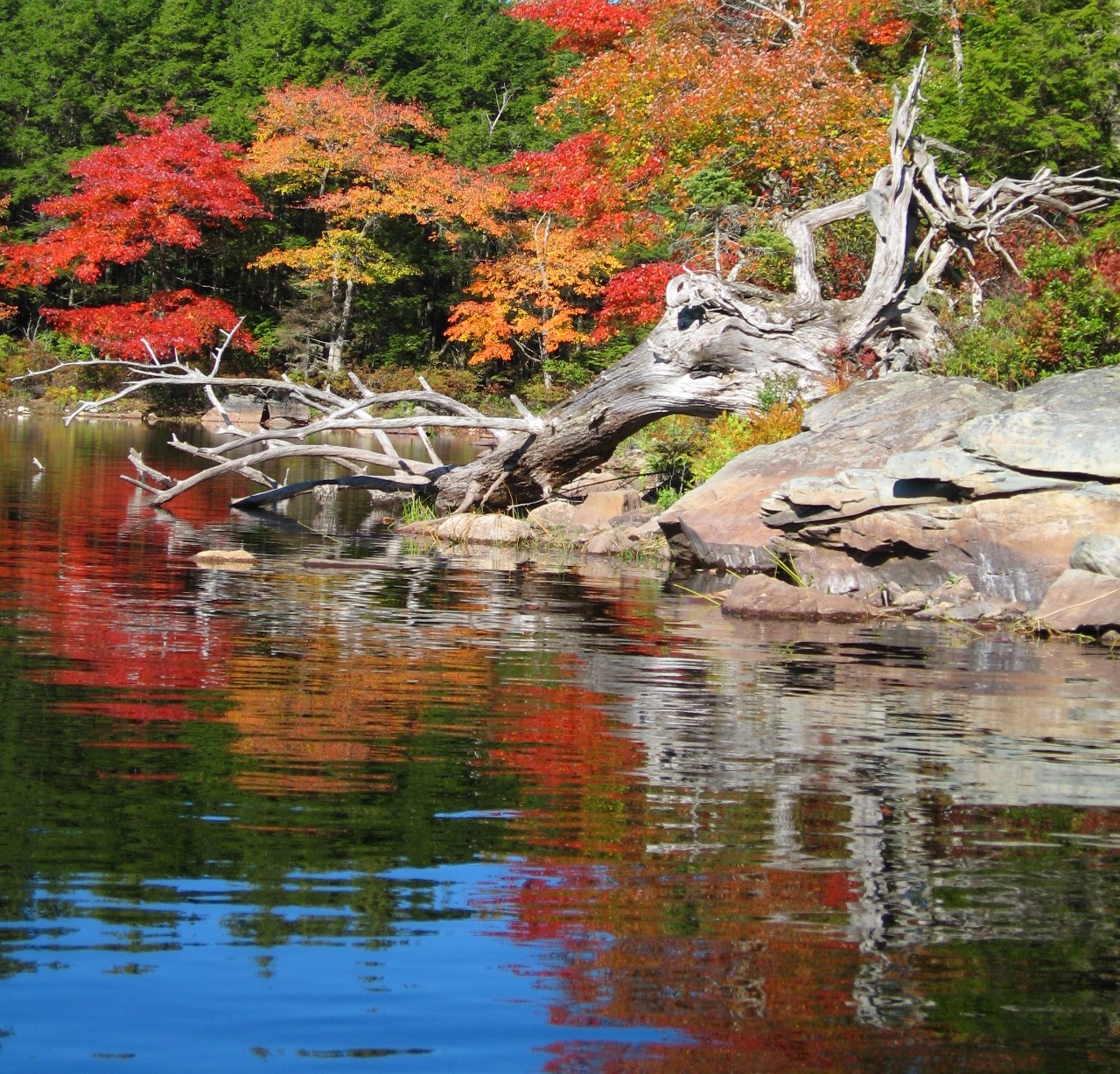Rajesh Rajaselvam
 |
Rajesh Rajaselvam University Teaching Fellow, Department of Biology Cross-appointed, Environmental Science ������Ƶ University ����������:���� Rajesh.Rajaselvam@Dal.Ca Phone:�� (902) 494-4251 Fax:�� �� ���� (902) 494-6889 Office: �� LSC Rm 7130 |
"Evaluation of Gliricidia sepium provenances in an alley cropping system using Vector Competition Analysis", Plant-tree-microbe interaction in Agroforestry systems (University of Toronto, Canada).
"The breeding system of Calliandra calothyrsus and the potential for genetic improvement", Forest genetics (University of Oxford, UK)
"The reproductive biology of Calliandra calothyrsus provenances", Ecology and Reproductive biology of Multi-Purpose Tree Species/ MPTS (University of Peradeniya, Sri Lanka)
Teaching
| Environmental Ecology (BIOL 3060)/ Fall | |
.jpg.lt_08f28c2a0f0d39efeb9febd2423fe27a.res/EE(Large).jpg) A clean/unpolluted stream close to a Sri Lankan tropical rain forest. |
The ecological effects of pollution, disturbance, and other stressors, both anthropogenic and natural are explored in detail in this course. Major subject areas are air pollutants, toxic metals, acidification, eutrophication, oil spills, pesticides, forestry, warfare, urban ecology, risks to biodiversity, and resource degradation. The overarching context of the course is ecological sustainability of the human economy. |
| Economic Botany (ENVS/BIOL 3226)/ Fall | |
.jpg.lt_fff8d9ffdc0ae72de594d18ce615c487.res/EB(large).jpg) A tea plantation with shade trees in upcountry Sri Lanka. A legume, Calliandra calothyrsus has been recommended as a medium shade for tea. Photo: Rajesh Rajaselvam |
This course explains the importance of plants and their role in human biological and cultural development. |
| Introductory Ecology (BIOL 2060)/ Fall�� (Lectures) | |
.jpg.lt_d8c25994fdb10f9197318659c350c88b.res/IE(large).jpg) Tropical dry forest ecosystems show a great diversity in Macro fauna (Anuradhapura, Sri Lanka). |
Ecology examines interactions of plants and animals, including humans, with each other and with their non-living world. Topics include population growth, competition, predation, food webs, metapopulation dynamics, biodiversity and ecosystem function. The course has a quantitative approach providing a foundation for further work in ecology, marine biology and environmental science. �� |
| Plants in Human Landscape (ENVS/BIOL/PLAN 3225)/ Winter | |
.jpg.lt_dc6220fb5540f2081987daa0f0b32751.res/PHL(large).jpg) |
The use of plants for human recreation and aesthetic purposes in gardens, public parks, suburban and urban landscapes. Topics include: history of gardens, garden design, identification, uses, and horticultural requirements of plants, soil and nutrients, plant materials, edible and medicinal plants in landscaping and plants and human health. |
Therapeutic gardens in Dublin, Ireland. The landscape design shows a sample proposal for LSC courtyard at ������Ƶ University. |
|
| Nature Conservation (BIOL 3601)/ Winter | |
.jpg.lt_d023836b8bdc6d74e91e8319caf83008.res/NC(large).jpg) |
This interdisciplinary course explores relationships between humans and the natural world, including damage caused to species and ecosystems. The course looks at environmental ethics and world views, environmental philosophy, sustainability, and conservation science and actions, including the establishment of protected areas. The ultimate focus will be on combating threats to nature, and major conservation challenges. This interactive course emphasizes student involvement and participation. �� |
Marine reserves and national parks give hope for wildlife conservation. Conservation projects saving endangered turtle species is a success story in the Indian Ocean Island. |
|
| Agroforestry (BIOL 3634)/ Summer | |
.jpg.lt_085c788fb153ced109f4644ce7e7b79a.res/AF(large).jpg) |
Agroforestry is a land-use system in which trees or shrubs are grown in association with agricultural crops or livestock. As practiced in the tropics, agroforestry generates numerous ecological, environmental and economic benefits. This hands-on, field-intensive course provides a foundation for understanding this traditional practice and its applications in North America. �� �� |
Agroforestry students at Dal doing field work and collecting soil samples and other data at Lahave Forest, Lunenburg. Photo; Rajesh Rajaselvam |
|
| Tropical Ecology and Biodiversity Field Class, Sri Lanka (BIOL 3640.06)/ Summer | |
.jpg.lt_d42091bb0d271925b1cc2e7d8f871264.res/Tropical-Ecology(large).jpg) Dal students conducting field experiments in Sri Lanka. Photo: Rajesh Rajaselvam Dal students conducting field experiments in Sri Lanka. Photo: Rajesh Rajaselvam�� |
This course aims to provide hands-on introduction to tropical ecology, biodiversity, and conservation. Students will learn through lectures, readings, discussions, guided field trips, field exercises, and research projects. |
Dal News Articles |
|
|
Celebrating young science stars Linking Dal expertise and community teachers Science students trek through Sri Lanka for a unique field experience |
|
Selected Publications
|
|
Rajaselvam, R. J. (2022). Experiential learning boosts plant conservation, CBA conference, Rouyn-Noranda, Canada. Rajaselvam, R. J. (2020). Experiential learning in biodiversity is vital for real conservation, presented at the World Biodiversity Forum, Davos, Switzerland.�� Rajaselvam, R. J. (2018). It’s time for a more realistic approach to conservation. The conversation, February, 2018. Rajaselvam, R. J. (2017). Gardens are inspirational for conservation bloom, presented at the 19th International Botanical Congress, Shenzhen, China and published in the proceedings. Murray, H., S. Lall, R. J. Rajaselvam, L. A. Boutilier, B. Blanchard and Douglas, A. J. (2010). A nutrigenomic analysis of dietary soy protein replacement on juvenile Atlantic halibut, Hippoglossus hippoglossus, L. Aquaculture (298), pp 282-293.�� Murray, H., S. Lall, R. J. Rajaselvam, L. A. Boutilier, R. M. Flight, B. Blanchard and Douglas, A. J. (2010). Effect of early introduction of microencapsulated diet to larval Atlantic halibut, Hippoglossus hippoglossus, L. assessed by microarray analysis.�� Marine Biotechnology (12), pp 214–229. Rajaselvam, R. J. and Timmer, V. R. (2004). Evaluation of Gliricidia sepium provenances in an alley cropping system with maize in Sri Lanka using Vector���� Competition Analysis. In: Proceedings/Book of abstracts of the first world congress of Agroforestry, Orlando, Florida, USA. pp 202. Chamberlain, J. R., A. J. Pottinger and Rajaselvam, R. J. (2001). Pengumpulan dan Produksi Benih. In: Stewart, J. Mulawarman, J.M. Roshetko and M.H. Powell. (Eds), Produksi dan pemanfaatan kaliandra (Calliandra calothyrsus): Pedoman lapang. International Centre for Research in Agroforestry (ICRAF), Bogor, Indonesia. pp 7-11. Rajaselvam, R. J. and Chamberlain, J. R. (1999). The breeding system of Calliandra calothyrsus and the potential for genetic improvement, presented at the 16th International Botanical Congress, St.Louis, Missouri, USA and published in the proceedings. Chamberlain, J. R., A. J. Pottinger and Rajaselvam, R. J. (1997). Seed collection and production. In: Powell, M. (Ed), Calliandra calothyrsus production and use: a field manual. FACT Net, Winrock International, Morrilton, Arkansas, USA. pp 7-10. Chamberlain, J. R and Rajaselvam, R. J. (1996a). Calliandra seed production-a problem or not?�� In: Evans, D. O. (Ed), International Workshop on the Genus Calliandra, Forest, Farm, and Community Tree Research Reports (Special issue). Winrock International. Morrilton, Arkansas, USA. pp 29-33. Chamberlain, J. R and Rajaselvam, R. J. (1996b). Calliandra calothyrsus pollinator behavior and seed production. In: Evans, D. O. (Ed), International Workshop on the Genus Calliandra, Forest, Farm, and Community Tree Research Reports (Special issue). Winrock International. Morrilton, Arkansas, USA. pp 34-40. Rajaselvam, R. J., H. P. M. Gunasena and Chamberlain, J. R. (1996). Reproductive biology of Calliandra calothyrsus in relation to its seed production in Sri Lanka. In: Evans, D. O. (Ed), International Workshop on the Genus Calliandra, Forest, Farm, and Community Tree Research Reports (Special issue). Winrock International. Morrilton, Arkansas, USA. pp 41-48. Rajaselvam, R. J and Wickramasinghe, I. P. (1996). Evaluation of Calliandra provenances for the midcountry intermediate zone of Sri Lanka. Sri Lankan Journal of Agricultural Sciences, Peradeniya, Sri Lanka. Vol. 33, pp 222-228. Rajaselvam, R. J., H. P. M. Gunasena and Wickramasinghe, I. P. (1995). Reproductive biology of Calliandra calothyrsus in relation to its seed production in Sri Lanka. Tropical Agricultural Reasearch, Peradeniya, Sri Lanka. Vol.7, pp 124-131. |
|
